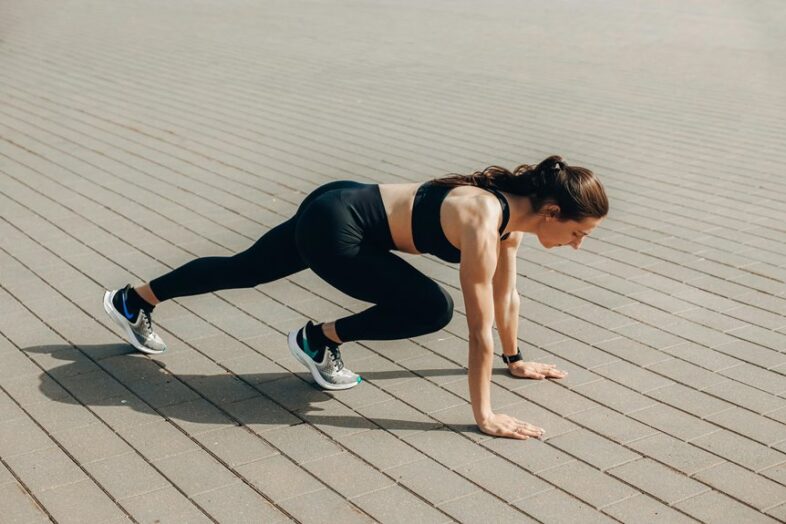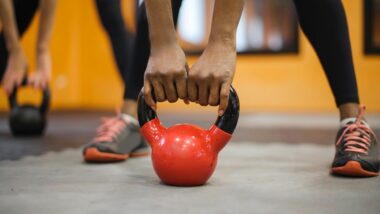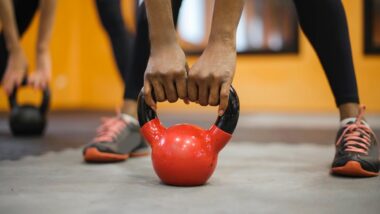Bodyweight Tabata workouts offer a highly effective and efficient form of high-intensity interval training. They require no equipment and provide a full-body workout in just 4-6 minutes. Squat jacks, push-up plank jacks, and lunge jumps are examples of exercises used in Tabata workouts. These exercises target specific muscle groups, improving cardiovascular health and burning calories. By incorporating bodyweight Tabata workouts into a fitness routine, individuals can experience increased endurance and stamina, and discovering more about the benefits and structure of these workouts can help optimize their fitness goals.
Key Takeaways
- Bodyweight exercises require minimal equipment.
- Tabata workouts improve cardiovascular health.
- High-intensity intervals burn calories efficiently.
- Squat jacks target legs and glutes.
- Burpees work multiple muscle groups.
Benefits of Tabata Workouts
Efficiency is a key aspect of any effective workout regimen, and Tabata workouts offer a multitude of benefits that make them an attractive option for those seeking to improve their overall fitness.
Tabata workouts, including the Bodyweight Tabata Workout, involve short bursts of high-intensity exercise lasting only 20 seconds, followed by 10 seconds of rest. This cycle is repeated for 4-6 minutes, making it a time-efficient option for those with busy schedules.
The benefits of Tabata workouts are numerous, including improved cardiovascular health, increased aerobic capacity, and enhanced weight loss. With the ability to burn up to 14.5 calories per minute, Tabata-style workouts are an effective tool for reducing body fat.
Additionally, incorporating HIIT training into a fitness routine can lead to increased metabolism and boosts in energy, making it a great complement to other forms of exercise.
Bodyweight Tabata Exercises
The benefits of Tabata workouts are well-established, and when it comes to implementing this style of training, the types of exercises used are just as important as the protocol itself. Bodyweight exercises are ideal for Tabata workouts, as they can be modified to suit different fitness levels and require minimal equipment.
Exercises like squat jacks, push-up plank jacks, and lunge jumps target specific muscle groups, while plank jacks and Low Plank Dolphin provide a full-body workout. These bodyweight Tabata exercises can be incorporated into HIIT workouts, providing an intense and effective way to improve cardiovascular fitness and burn calories.
Full Body exercises like Low Plank Dolphin engage multiple muscle groups, making them perfect for Tabata workouts. By incorporating these exercises into a Tabata workout routine, individuals can experience the benefits of high-intensity interval training while improving overall fitness and belonging to a community of like-minded individuals who prioritize health and wellness.
Regular practice of bodyweight Tabata exercises can lead to increased endurance, stamina, and power. Incorporating kettlebell swings into a workout routine can also enhance the effectiveness of Tabata workouts, as they provide a great combination of cardio and strength training benefits.
Tabata Workout Structure
With its origins in high-intensity interval training, a Tabata workout structure consists of 8 rounds of 20 seconds of all-out work, followed by 10 seconds of rest, totaling 4 minutes per circuit. This Tabata protocol is designed to elicit increased excess post-exercise oxygen consumption, leading to increased caloric burn and improved cardiovascular fitness.
Each round of 20 seconds of all-out work is followed by 10 seconds of rest, allowing for brief recovery before the next interval.
The Tabata workout structure is characterized by its high-intensity intervals, with the 20 seconds of work being at maximum effort and the 10 seconds of rest being a brief period of recovery. The 8 rounds of 20 seconds of all-out work and 10 seconds of rest are designed to push individuals to their limits, promoting a sense of community and belonging among those who participate in the workout.
Incorporating kettlebell exercises into a Tabata workout can provide a full-body workout, improving overall fitness and increasing caloric burn.
Effective Bodyweight Exercises
How effectively can bodyweight exercises be incorporated into a Tabata workout to achieve an exhaustive full-body training session? By incorporating exercises that target multiple muscle groups, individuals can improve their aerobic and anaerobic capacity, enabling them to burn calories and enhance overall fitness.
Exercises like squat jacks, push-up plank jacks, and burpees can be done in a Tabata format to achieve this.
- Squat jacks target the legs, glutes, and core muscles
- Push-up plank jacks work the upper body and engage the core muscles
- Lunge jumps improve power and speed by utilizing the lunge position
- Burpees work multiple muscle groups to improve cardiovascular fitness.
These exercises can be done at-home, making it easy to fit in a workout. By incorporating these exercises into a Tabata workout, individuals can improve their overall fitness and burn calories, all from the comfort of their own home, making it an ideal at-home workout solution. Incorporating kettlebell swings into a workout routine can also increase metabolism and burn calories in a short amount of time.
Tabata Fitness Benefits
Incorporating Tabata workouts into a fitness regimen yields numerous benefits, particularly improving cardiovascular health by increasing aerobic and anaerobic capacity. This high-intensity interval training (HIIT) protocol, developed by Izumi Tabata, involves short bursts of work followed by brief periods of rest. A typical Tabata workout consists of 20 seconds of work followed by 10 seconds of rest, repeated for 4-6 minutes.
This format allows for a thorough and efficient workout, boosting metabolism and burning calories. As a result, individuals can expect effective weight loss and improved body composition. The Tabata workout also enhances muscular endurance, particularly in the legs and glutes, by targeting fast-twitch muscle fibers. With its short duration and high intensity, a Tabata workout is an ideal fitness solution for those with busy schedules, promoting overall fitness and a sense of belonging among like-minded individuals who value efficient and effective exercise routines. Incorporating home workouts with adjustable dumbbells, such as the PowerBlock Dumbbells 90, can further enhance the effectiveness of a Tabata workout by providing a space-saving and cost-efficient solution for strength training and weightlifting exercises.
Frequently Asked Questions
Is a 20 Minute Tabata Workout Enough?
A 20-minute Tabata workout can be an effective duration, comprising intense sessions, to achieve fitness goals, when incorporated into a regular workout schedule, yielding ideal results for overall health and wellness.
What Is Bodyweight Tabata?
Tabata basics involve high intensity intervals, typically using bodyweight exercises, to create effective tabata workouts that promote overall fitness and wellbeing through challenging, yet accessible, physical activity routines.
Can You Lose Weight Just Doing Tabata?
Can intense training alone yield results? Tabata results show significant weight loss and calorie burn, making it a viable option for those seeking community-supported weight loss through high-intensity training.
What Are the Disadvantages of Tabata?
Tabata's disadvantages include injury risk, muscle soreness, and overexertion concerns, posing a negative impact on overall well-being if not properly managed, affecting physical and mental health for individuals seeking fitness belonging.
Conclusion
Tabata workouts ironically bring exhaustion, yet surprisingly, rejuvenation. Sweat-drenched bodies, exhausted muscles, and heavy breathing belie the energizing effects of this intense routine. Amidst the fatigue, a spark of essentialness emerges, leaving one spent, yet strangely, revitalized.


